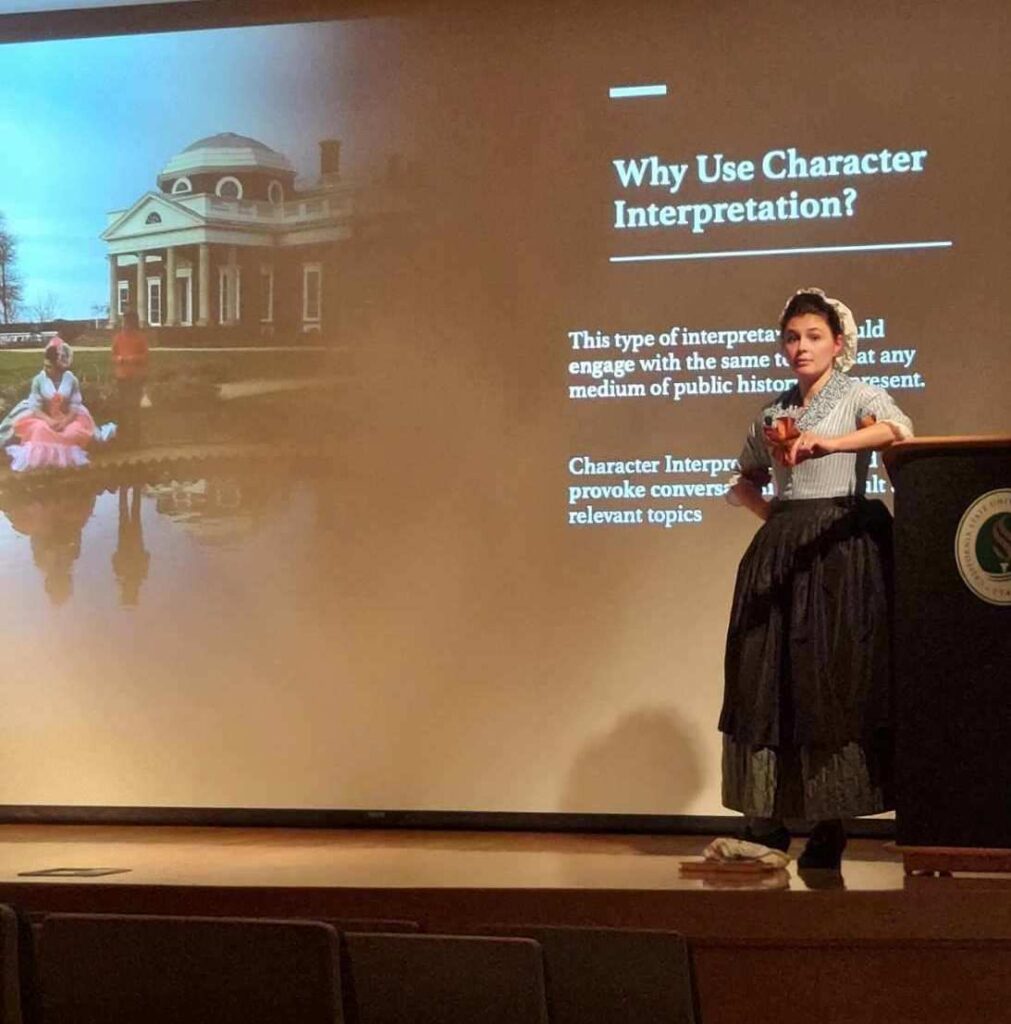Our research begins with names: Adam, Fanny, Charlotte, Isaac, Hannah. Sometimes, finding the names is the end-goal of our work, requiring a needle-in-a-haystack level of attention to a historical document or an archive. In the case of the Bray School Lab’s research, however, the names are our starting points. We begin with a name and seek to find the whole person behind it.
The Story Map that I helped develop, called Adam and Fanny’s World, depicts a day in the lives of several of the students – starting with Adam and Fanny, two children enslaved by William & Mary (known in text as The College). This project is an extension of the mission that the Lab has to share new research in exciting and innovative ways. It is free and directly available to the public, built upon the primary documents that we used as part of our research and transcription projects.

This Story Map reimagines what the physical and social landscape of Williamsburg might have looked like to Adam, Fanny, and the other students at the School, combining it with the context of present-day memorials and landmarks. In this way, the present and the past are treated as parallel to one another, interacting at different sites around the city and directly connecting the people who live and work in Williamsburg now with those who did centuries ago. Public history encourages this kind of approach, where we can “re-people” both existing and reconstructed spaces by reading between the lines of existing documents rather than being restricted by what little direct information exists. It is our hope that you will utilize this project to reconsider what we do know about Bray School scholars and their world.
Public history allows us to breathe life into the people and places we research, going beyond the text of a historical document to get to what someone’s lived experience was like—to know how they might have seen and moved about in the world around them. This process of creatively reconstructing people themselves is easier for some historical figures than it is for others. People whose writings or materials survive – like well-known political thinkers and enslavers such as Thomas Jefferson or George Washington – tend to be less challenging to uncover. They were wealthy white men and well known by their contemporaries, a perfect recipe for importance in the historical record. For so many other people, however, their voices are either hidden behind the lines of recorded history or left out altogether. We must turn to the historical imagination to fill in the gaps.

The enslaved children who attended the Bray School are accounted for largely as footnotes in the writings of the white enslavers of Williamsburg, in documents that do not give them the dignity of speaking for themselves or expressing their personalities. Pulling threads of their lived experiences out of these documents requires us to do what historian Marisa J. Fuentes calls “reading along the bias grain” of the historical record in her 2016 book, Dispossessed Lives: Enslaved Women, Violence, and the Archive. This involves actively considering the ways in which the documents we are using are imbalanced and even violent in how they treat enslaved people.
To read along the bias grain, scholars start with what we know of the experiences of enslaved people in households such as those in which the Bray scholars resided. We add this information to whatever details we can glean about these students directly from primary sources, accounting for the biases of the archive and what these documents are refusing to tell us. Finally, we take those together with any other relevant first-hand accounts, putting them all into a narrative to try and capture what these children’s perspectives might have been and how they might have experienced and interacted with the world.
The core goals of the Bray School Lab are to communicate the results of our research and analysis to the public in ways that are accessible and creative, and to share the stories of the people involved with the Bray School with empathy and honor. Adam, Fanny, and the many other students who attended the Bray School deserve to be seen as the inquisitive, shy, creative, opinionated, outspoken, determined, imperfect (and everything else) children that they may have been, not just the subjects of an advertisement or an aside in the letter of an enslaver. When we view them as the full people they were, we open up the ways in which we in the present can directly connect to the Bray School students in the past. We hope that this Story Map’s reach may extend to helping individuals and families in the many descendant communities linked with Williamsburg on their paths to connect with their own family histories. The more students we can name and the more ways we are able to connect them with the wider community, the more we will help move forward all types of historical inquiry for years to come.
Mary Hannah Grier
Bray School Lab Student Thought Partner, William & Mary ’22
CW Historic Trades Bindery Intern, Summer 2022







